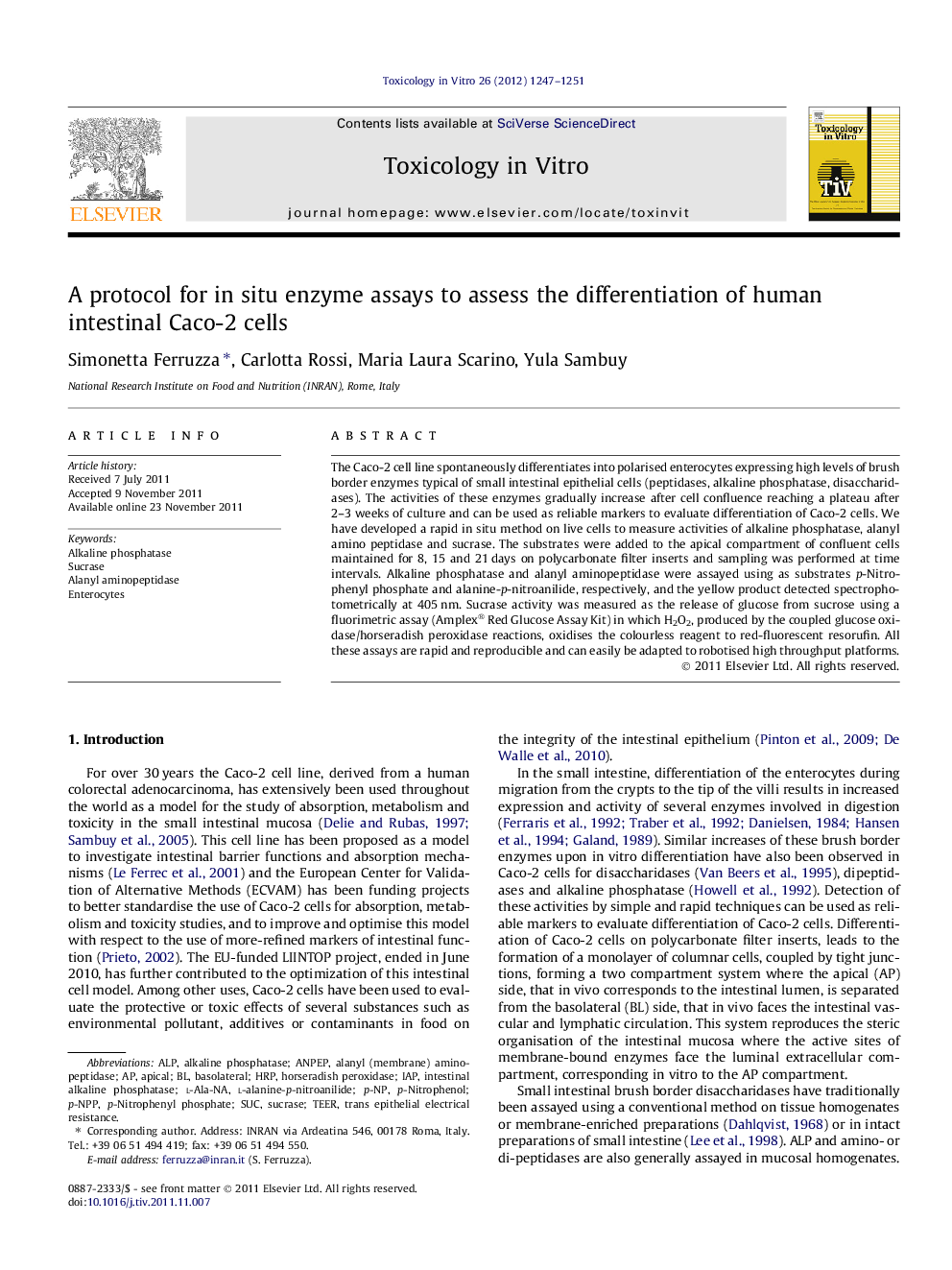| Article ID | Journal | Published Year | Pages | File Type |
|---|---|---|---|---|
| 2602548 | Toxicology in Vitro | 2012 | 5 Pages |
The Caco-2 cell line spontaneously differentiates into polarised enterocytes expressing high levels of brush border enzymes typical of small intestinal epithelial cells (peptidases, alkaline phosphatase, disaccharidases). The activities of these enzymes gradually increase after cell confluence reaching a plateau after 2–3 weeks of culture and can be used as reliable markers to evaluate differentiation of Caco-2 cells. We have developed a rapid in situ method on live cells to measure activities of alkaline phosphatase, alanyl amino peptidase and sucrase. The substrates were added to the apical compartment of confluent cells maintained for 8, 15 and 21 days on polycarbonate filter inserts and sampling was performed at time intervals. Alkaline phosphatase and alanyl aminopeptidase were assayed using as substrates p-Nitrophenyl phosphate and alanine-p-nitroanilide, respectively, and the yellow product detected spectrophotometrically at 405 nm. Sucrase activity was measured as the release of glucose from sucrose using a fluorimetric assay (Amplex® Red Glucose Assay Kit) in which H2O2, produced by the coupled glucose oxidase/horseradish peroxidase reactions, oxidises the colourless reagent to red-fluorescent resorufin. All these assays are rapid and reproducible and can easily be adapted to robotised high throughput platforms.
► We present a method useful to follow effects of bioactive molecules on in vitro intestinal cell differentiation. ► The in situ enzymatic assays can be used to study the toxic effects of substances interfering with proper cell functions. ► The assays are easily amenable to high-throughput applications.
